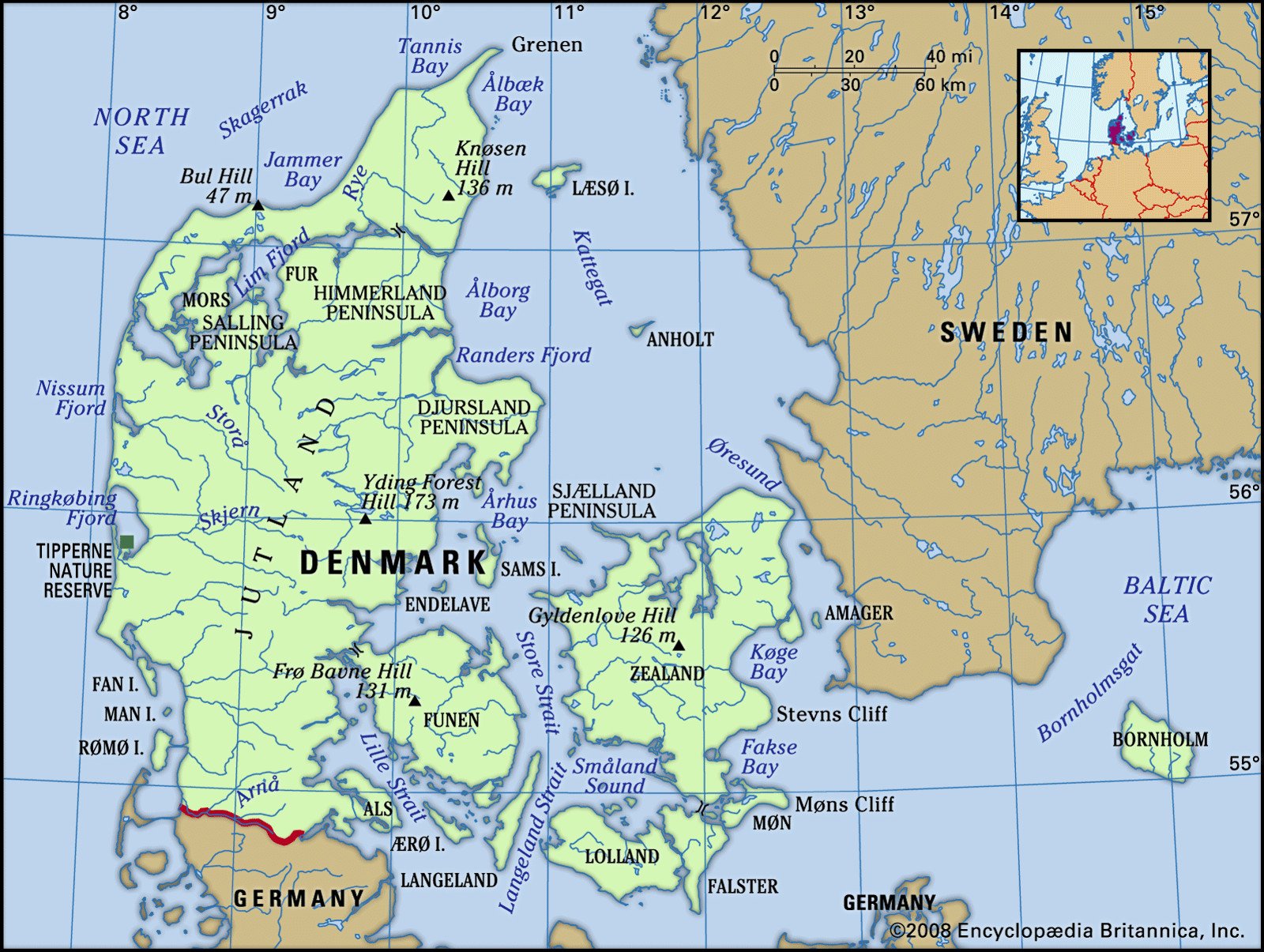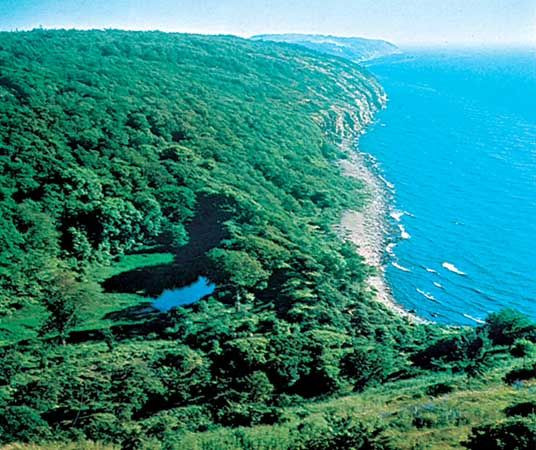Denmark, a Scandinavian nation renowned for its design, history, and happy citizens, is geographically positioned in Northern Europe. But Where Is Denmark Located exactly? This article delves into the precise location of Denmark, exploring its borders, landscape, and key geographical features that define this fascinating country.
Denmark’s location is pivotal to understanding its unique character. It is situated in Northern Europe, and forms a bridge between Scandinavia and continental Europe. The mainland of Denmark is Jutland, a peninsula directly attached to Germany to the south. This land border with Germany stretches for approximately 42 miles (68 km). Beyond this continental connection, Denmark is surrounded by maritime borders.
Denmark’s Location in Europe: Borders and Neighbors
To the west of Denmark, across the North Sea, lies the United Kingdom. Moving north, Denmark’s maritime neighbors include Norway and Sweden. These Scandinavian countries are separated from Denmark by crucial sea passages that link the North Sea to the Baltic Sea. These waterways, from west to east, are known as the Skagerrak, the Kattegat, and The Sound (Øresund). Traveling eastward into the Baltic Sea, you’ll encounter the Danish island of Bornholm, further illustrating Denmark’s strategic position in the region.
Topography and Landscape: Lowland Terrain Shaped by Glaciers
Denmark is characterized by its remarkably low-lying terrain. On average, the country sits at no more than 100 feet (30 meters) above sea level. Even Denmark’s highest point, Yding Forest Hill (Yding Skovhøj) in east-central Jutland, reaches a modest 568 feet (173 meters). This gentle topography is a defining aspect of the Danish landscape.
The contours of Denmark’s landscape were largely sculpted by the Weichsel glaciation at the end of the Pleistocene Epoch. Repeated glacial advances and retreats over millennia shaped the land. Initially, barren chalk and limestone surfaces were covered with soil as the glaciers receded. This process created the low, rolling, and generally fertile moraines that diversify the otherwise flat Danish terrain.
A notable geographical boundary, marking the furthest extent of the Scandinavian and Baltic ice sheets, runs across Jutland. This line extends from Nissum Fjord on the west coast eastward towards Viborg, then southward through the peninsula towards Åbenrå and Flensburg, just across the German border. The contrast is stark: western Jutland is characterized by flatlands of sands and gravel deposited by glacial meltwater, while eastern and northern Denmark boast fertile loam plains and hills, becoming sandier closer to the prehistoric ice front.
Rivers and Lakes: Drainage Across the Lowlands
Water is a prominent feature of the Danish landscape. The longest river in Denmark is the Gudenå, stretching 98 miles (158 km). It originates northwest of Tørring in east-central Jutland, flows through the scenic Silkeborg Lakes (Silkeborg Langsø), and empties into the Randers Fjord on the east coast. Numerous smaller lakes dot the country, with Arresø on Zealand being the largest. Additionally, lagoons have formed behind coastal dunes in western Denmark, exemplified by Ringkøbing and Nissum fjords.
Soil Composition: From Glacial Deposits to Fertile Farmland
The soil across most of Denmark is composed of glacially deposited gravel, sand, and clay, overlying chalk and limestone bedrock. The presence of subterranean limestone initially enriched the soil with calcium, which surprisingly, initially hindered its agricultural use during the Neolithic Period. However, centuries of cultivation have dramatically improved the soil quality. Today, over half of Denmark’s land is considered excellent for farming, a testament to the enduring interaction between the land and human endeavor.
In conclusion, where is Denmark located? Denmark is strategically positioned in Northern Europe, bridging Scandinavia and the European continent. Its geography, shaped by glacial history and characterized by a low-lying landscape, maritime borders, and fertile soils, has profoundly influenced its development and identity as a significant European nation.


 coast of Bornholm, Denmark
coast of Bornholm, Denmark